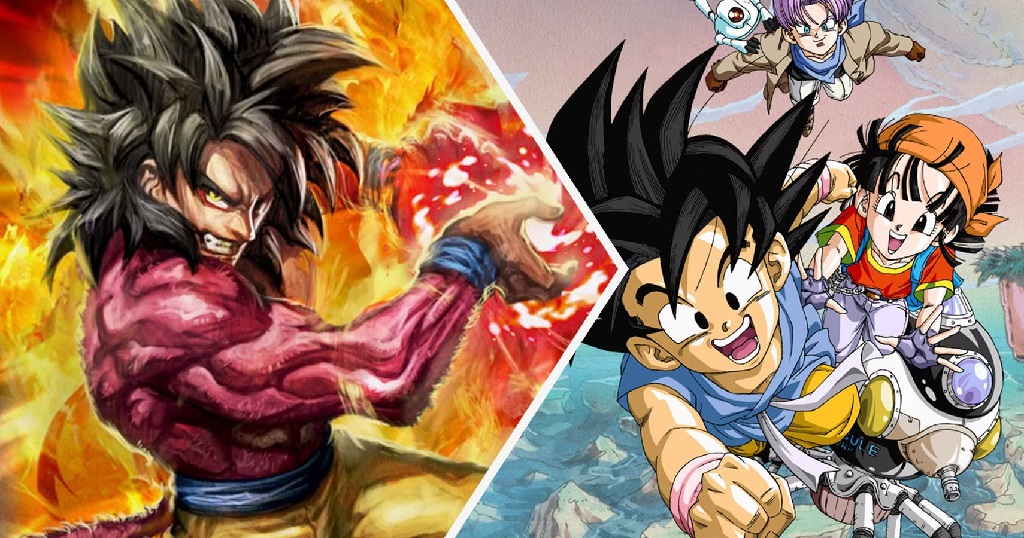Dragon Ball GT: The Controversial Series That Divided Fans

Introduction
Dragon Ball GT, the sequel to the immensely popular Dragon Ball Z, is a series that evokes strong emotions and opinions among fans. Launched in 1996, Dragon Ball GT departed from the established canon and introduced new storylines, transformations, and characters. However, this departure from the original vision of creator Akira Toriyama led to a divided fanbase. In this article, we will explore the controversial aspects of Dragon Ball GT, analyze its impact on the Dragon Ball franchise, and examine the factors that contributed to its divisive reception.
The Concept and Creation of Dragon Ball GT
Dragon Ball GT was conceived as a continuation of Dragon Ball Z, with the goal of taking the series in a new direction. Toriyama, while providing initial designs and some creative input, took a step back from the project, allowing a new team to take the reins. This shift in creative control resulted in notable changes in tone, storytelling, and character development that would prove divisive among fans.
Departure from Canon: The Non-Inclusion of Toriyama’s Vision
One of the main factors that contributed to the controversy surrounding Dragon Ball GT was its departure from the original creator’s vision. Akira Toriyama did not have direct involvement in the series, and as a result, GT did not follow the manga’s continuity. The absence of Toriyama’s storytelling and character-driven approach led to a noticeable shift in the overall feel and direction of the series.
The Introduction of New Transformations and Characters
Dragon Ball GT introduced several new transformations, such as Super Saiyan 4, and characters, including the antagonist Baby and the female Saiyan, Pan. While these additions aimed to inject freshness into the series, they were met with mixed reactions. Some fans embraced the new transformations and characters, seeing them as exciting additions to the Dragon Ball mythos. Others, however, felt that they deviated too far from the established Dragon Ball universe, resulting in a lack of authenticity and connection to the original series.
Pacing and Storytelling Issues
Another aspect that divided fans was the pacing and storytelling of Dragon Ball GT. The series had a more episodic structure, with standalone adventures and quests for the Dragon Balls, as opposed to the longer, interconnected story arcs of its predecessor, Dragon Ball Z. This departure from the intense, overarching storylines of Dragon Ball Z left some fans feeling disconnected and longing for the high-stakes battles and character development that characterized its predecessor.
Artistic Changes and Animation Quality
Dragon Ball GT underwent noticeable artistic changes compared to Dragon Ball Z. The character designs and animation style differed, which some fans found jarring and inconsistent with the established aesthetic. Additionally, the animation quality faced occasional dips, leading to criticism from fans who expected consistent and high-quality visuals.
Exploration of New Concepts and Themes
Despite the controversy surrounding Dragon Ball GT, it explored new concepts and themes that expanded the Dragon Ball universe. The series delved into the concept of the Dragon Balls themselves, introducing the concept of negative energy and its influence on the Earth and its inhabitants. Dragon Ball GT also explored the consequences of overusing the Dragon Balls and the potential dangers of tampering with the balance of the universe. These explorations added depth and complexity to the series, offering a fresh perspective on the Dragon Ball mythos.
The Legacy and Influence of Dragon Ball GT
Despite the controversy surrounding Dragon Ball GT, it left a lasting impact on the Dragon Ball franchise and its fanbase. The introduction of Super Saiyan 4, in particular, has resonated with fans and has been incorporated into subsequent Dragon Ball media. The series also explored new concepts and storylines that expanded the Dragon Ball universe, paving the way for future iterations and spin-offs.
Fan Perspectives and Ongoing Debate
The debate surrounding Dragon Ball GT continues to this day, with fans sharing differing opinions on its merits and shortcomings. Some appreciate the series for its unique ideas and fresh approach, seeing it as a necessary evolution of the Dragon Ball franchise. They argue that GT’s departure from the established canon allowed for new creative opportunities and a different storytelling experience. Others, however, believe that Dragon Ball GT failed to capture the essence of its predecessors, deviating too far from the original series and lacking the depth and character development that fans had come to expect.
The Role of Nostalgia
Nostalgia plays a significant role in the perception of Dragon Ball GT. For many fans who grew up watching Dragon Ball Z, GT was their first taste of a new Dragon Ball series. As such, it holds a special place in their hearts, representing a continuation of the adventures they cherished from their childhood. Conversely, for fans who were introduced to the franchise through Dragon Ball GT or who were already familiar with the original manga and Dragon Ball Z, the series may be seen as a departure from the established continuity and storytelling style.
Conclusion
Dragon Ball GT remains a controversial chapter in the Dragon Ball saga, with passionate debates and ongoing discussions among fans. While it introduced new transformations, characters, and storylines, its departure from the original vision of Akira Toriyama resulted in a mixed reception. Nevertheless, Dragon Ball GT has left an indelible mark on the franchise, sparking ongoing debates and discussions among fans. It serves as a testament to the enduring popularity and impact of the Dragon Ball series.
Read More
- Anniversary Flowers Online MiamiFlowersOnline Shop
- “Feuer Speiender Berg (umgangssprachlich) Vegas Bonus Program Code 2024 Aktionscode 55 Freispiele
- 10 Reward Nach Registrierung 10 Euro Gratis Casino
- Vulkan Vegas Casino Auszahlung Erfahrung ️ Standocs
- Vulkan Vegas Erfahrungen 2024: Betrug Oder Seriös? » Zum Test